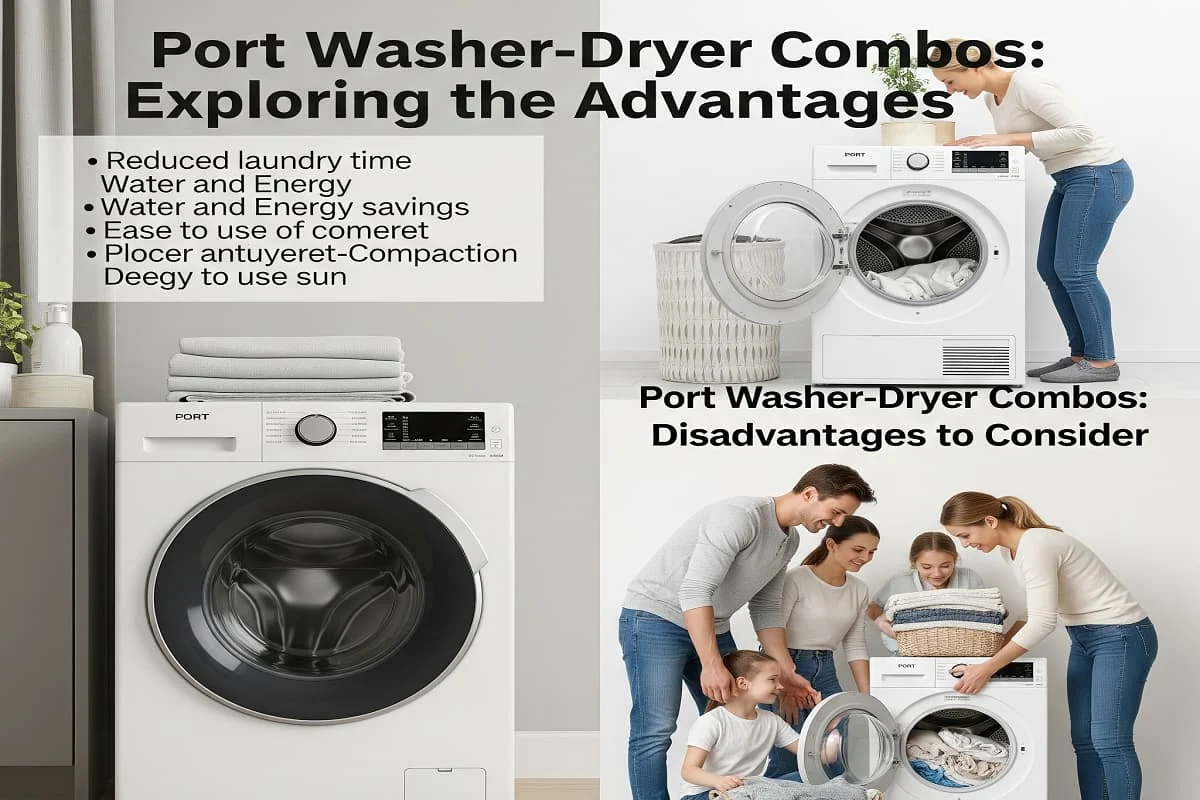
Convenience, convenience, convenience is the game's name in our busy world today, particularly in doing laundry. Washing one's clothes is a serious business for individuals residing in small apartments, RVs, or houses that do not have traditional hookups. Portable washer and dryer sets are a blessing to them. But how exactly do these small machines work, how do they compare with traditional machines, and are they as good as everyone claims they are
In this guide, we’ll break down the mechanics, benefits, and limitations of portable washer-dryer combos in a way that’s easy to understand, whether you’re a first-time buyer or just curious about how they operate.
Read more: Portable vs. Traditional Washing Machines
✔ RV and tiny house owners
✔ College students
✔ anyone with limited laundry space
Portable washer-dryers are a smart option for particular lifestyles, not a substitute for full-size units. If you reside in an apartment, are a frequent flier, or just wish to have a second laundry system, they're a fabulous buy. But if you handle large weekly loads, a conventional setup remains the way to go.
By dissecting the mechanics and practicality of these machines, our guide aims to assist you in making an educated decision. With or without ample space, or simply because you enjoy having the newest and best appliances, portable combos bring laundry liberty to your doorstep.
1. What Is a Portable Washer-Dryer Combo?
A washer-dryer combo is one of the appliances that performs both washing and drying of clothes, for which two separate units were required. In comparison to standard laundry systems, these small appliances are meant for small spaces and most of the time function without a fixed plumbing installation.Major Features:
- Small size (usually 24-28 inches wide, roughly the same as a dishwasher)
- Lightweight (most have wheels so that they can be easily moved)
- All-in-one functionality (washes and dries in the same drum)
- Adaptable hookups (can connect to a sink or use a built-in water tank)
These machines are ideal for:
✔ Apartment dwellers✔ RV and tiny house owners
✔ College students
✔ anyone with limited laundry space
2. How Do Portable Washer and Dryer Combos Work?
To understand how these appliances work, consider two basic processes: washing and drying.A. The Washing Process
Portable washers work exactly like regular top-load machines but are smaller in size. This is the process of how they wash your clothes:1. Water Intake
- Others are connected directly to a faucet using an adapter hose.
- Others have an in-built tank that you fill up manually (default in built-in non-electric ones).
2. Agitation & Cleaning
- The drum turns through a combination of gravity wash (clothes spinning around in water) or an impeller (a small disc turning at a circular pace to generate motion).
- Water and detergent are mixed to emulsify grime and stains.
3. Drainage
- Wastewater is drained out via a drain hose, either into a sink, tub, or floor drain.
B. The Drying Process
Portable dryers in such sets would either employ one of two methods:1. Ventless Condensation Drying (Most Common)
- Rather than expelling hot air outside, the machine recycles air within the drum.
- Water from soaked clothes evaporates onto a cold surface and is drained in a tray or pumped out.
- Advantages: External vent not required.
- Disadvantages: Drying time is longer (dries in 2-3 hours).
2. Vented Drying (Not so Popular in Combos)
- Needs an exhaust hose to direct damp air outside (such as in older dryers).
- Quick drying, but less portable as ventilation is required.
3. Energy Efficiency & Performance
One of the primary issues surrounding portable combos is whether they provide sufficient cleaning power while conserving energy.Cleaning Effectiveness
- Most portable washers accommodate small to medium load capacities (5-10 lbs.).
- They may not handle heavy stains or more bulky items such as comforters.
- Spin speed (in RPM) impacts dryness before drying—greater RPM = more dryness.
Energy & Water Usage
- Electric models consume 200-500 watts per washing cycle (much less than full-sized washers).
- Manual fill models conserve water but use more labor.
- Dryers consume lots of energy, so air-drying some of your clothes can be less expensive.
4. Portable Washer-Dryer Combos: Advantages & Disadvantages
Advantages
- Space-saving—perfect for closets, bathrooms, or RVs.
- No installation—great for renters.
- Reduced utility bills—less electricity and water usage.
- Convenience—Wash and dry clothes in one small machine.
Disadvantages
- Limited capacity—not suited for large families.
- Slower drying time—Ventless drying is slower.
- Can have manual steps—some models have water filling/draining.
5. Are They Worth It? Final Thoughts
Portable washer-dryers are a smart option for particular lifestyles, not a substitute for full-size units. If you reside in an apartment, are a frequent flier, or just wish to have a second laundry system, they're a fabulous buy. But if you handle large weekly loads, a conventional setup remains the way to go.
Key Takeaways:
- - They work via the integration of mini washing and condensation drying.
- - Ideal for 1-2 person families or occasional use.
- - Select energy-efficient models with high-speed rotation.
By dissecting the mechanics and practicality of these machines, our guide aims to assist you in making an educated decision. With or without ample space, or simply because you enjoy having the newest and best appliances, portable combos bring laundry liberty to your doorstep.
.png)








